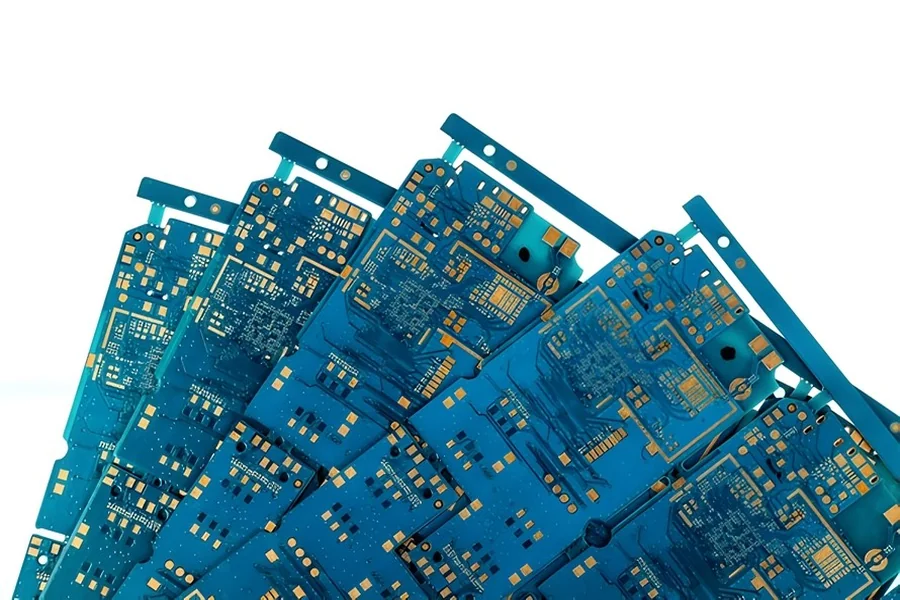In the electronics industry, FR4 PCB has become the standard material for a wide range of applications, offering a reliable balance of cost, performance, and manufacturability. FR4, a fiberglass-reinforced epoxy laminate, provides excellent mechanical strength, thermal stability, and electrical insulation, making it suitable for everything from consumer electronics to industrial control systems and telecommunications equipment. Understanding the features, advantages, and applications of FR4 PCBs is essential for selecting the right solution for your electronic projects.
What Is FR4 PCB?
A FR4 PCB is made from a composite material consisting of woven fiberglass cloth and epoxy resin. The term “FR” stands for “flame retardant,” while “4” refers to the grade of the material. The fiberglass provides mechanical stability, while the epoxy resin ensures insulation and heat resistance. Copper layers are laminated onto this substrate to create conductive pathways, enabling the transfer of electrical signals between components.
FR4 PCBs can be manufactured as single-sided, double-sided, or multilayer boards. Single-sided FR4 boards are used for simple circuits, while double-sided and multilayer designs allow for more complex routing and higher circuit density, making FR4 highly versatile across different applications.
Advantages of FR4 PCB
One of the key benefits of FR4 PCB is its cost-effectiveness. Compared to specialized materials such as PTFE or ceramic, FR4 provides good electrical and thermal properties at a fraction of the cost. This makes it ideal for consumer electronics, prototyping, and mass production projects.
FR4 also offers excellent mechanical strength and dimensional stability, allowing PCBs to withstand physical stress and thermal expansion during assembly and operation. Its electrical insulation properties reduce the risk of short circuits and signal interference, which is critical for maintaining device performance and reliability.
Thermal stability is another advantage. FR4 PCBs can operate reliably across a wide temperature range, making them suitable for applications in industrial environments, automotive electronics, and high-performance consumer devices. Additionally, FR4’s flame-retardant properties enhance safety and compliance with industry standards.
Applications of FR4 PCB
FR4 PCB technology is used in virtually every sector of the electronics industry. Consumer electronics, including smartphones, tablets, and home appliances, rely on FR4 boards for affordable and reliable circuit solutions. In industrial applications, FR4 PCBs are used in automation equipment, motor controllers, power supplies, and sensor systems.
Telecommunication devices and networking equipment also use FR4 boards to achieve high signal integrity while maintaining cost efficiency. In the automotive sector, FR4 PCBs are commonly found in control modules, lighting systems, and infotainment units, providing stable performance under varying temperatures and environmental conditions. Even in medical electronics, FR4 is employed in non-critical diagnostic and monitoring equipment where reliability and affordability are essential.
Manufacturing Process of FR4 PCB
The fabrication of FR4 PCB begins with the preparation of the FR4 substrate, onto which copper layers are laminated. The desired circuit pattern is transferred using photolithography, followed by chemical etching to remove excess copper. Drilling is performed to create vias, and plating ensures reliable interlayer connectivity.
Solder mask and silkscreen layers are applied to protect traces and provide component identification. The final board undergoes rigorous electrical testing to ensure accuracy and compliance with design specifications. Advanced FR4 boards may include multilayer constructions with controlled impedance, making them suitable for high-speed and high-frequency applications.
Choosing a Reliable Supplier
Partnering with a trusted FR4 PCB supplier ensures consistent quality, precision, and timely delivery. A reliable supplier provides a wide range of FR4 materials, thicknesses, and layer configurations to meet the requirements of diverse applications. By choosing an experienced FR4 PCB supplier, businesses can reduce manufacturing risks, improve product reliability, and accelerate time-to-market for their electronic devices.

